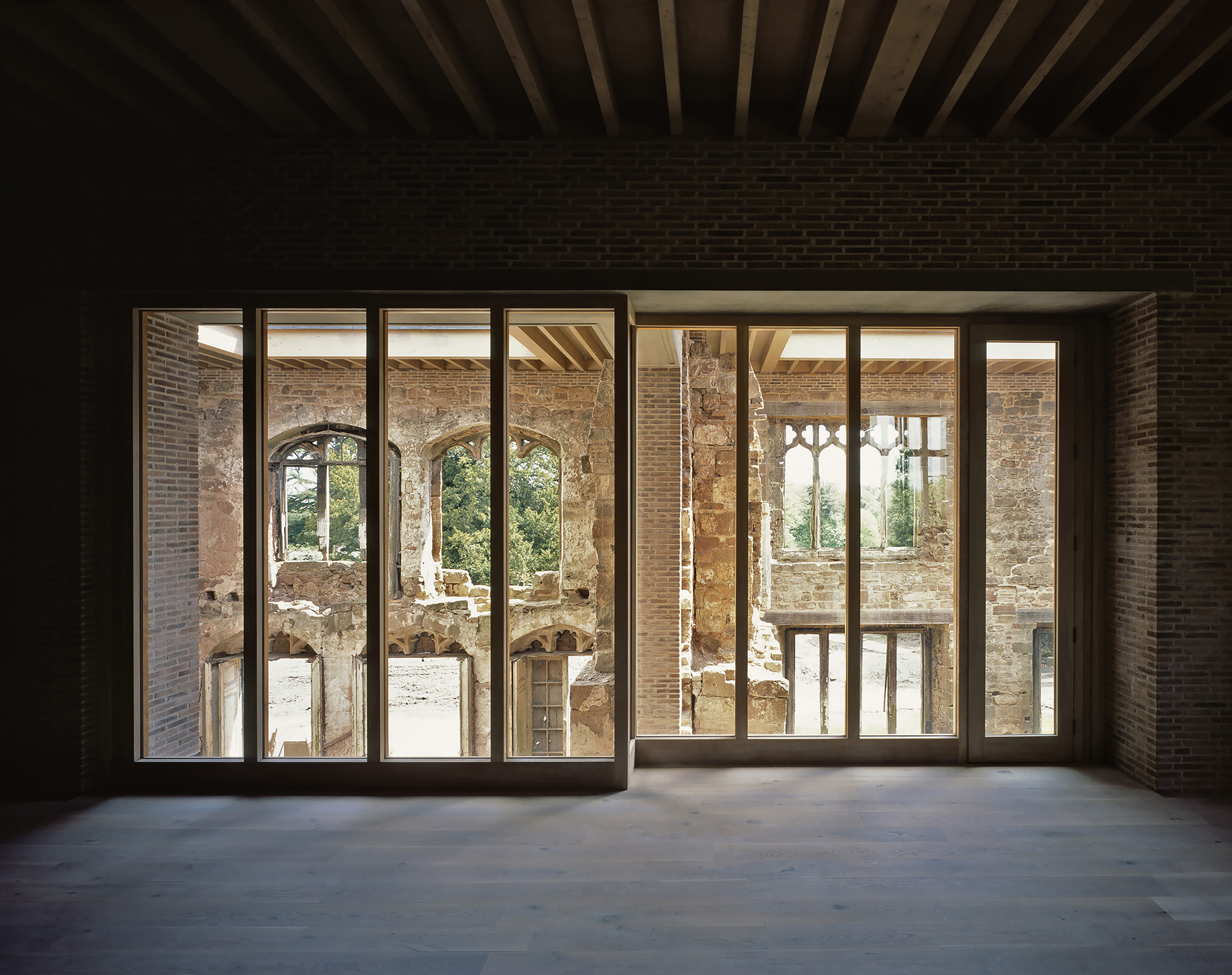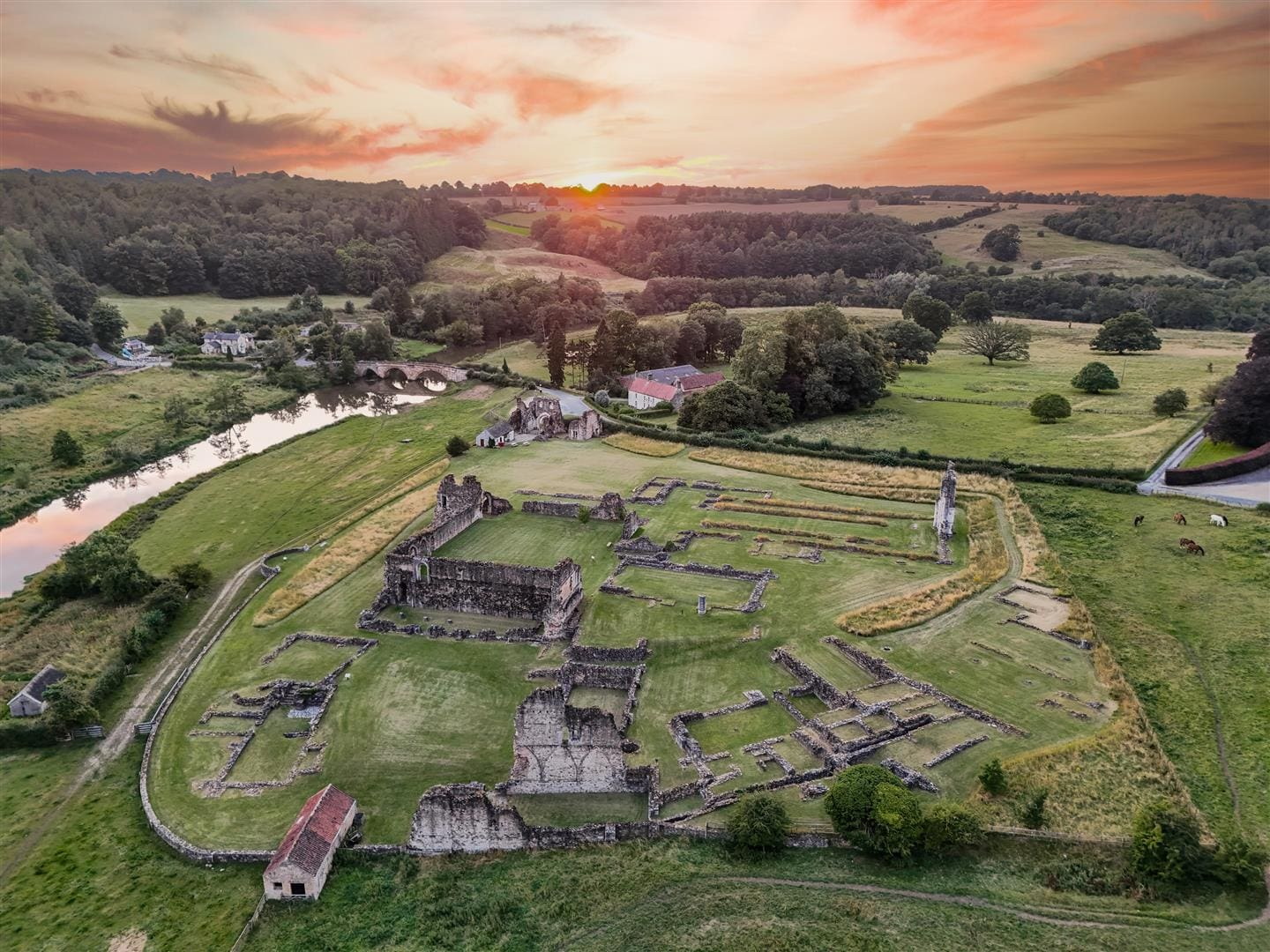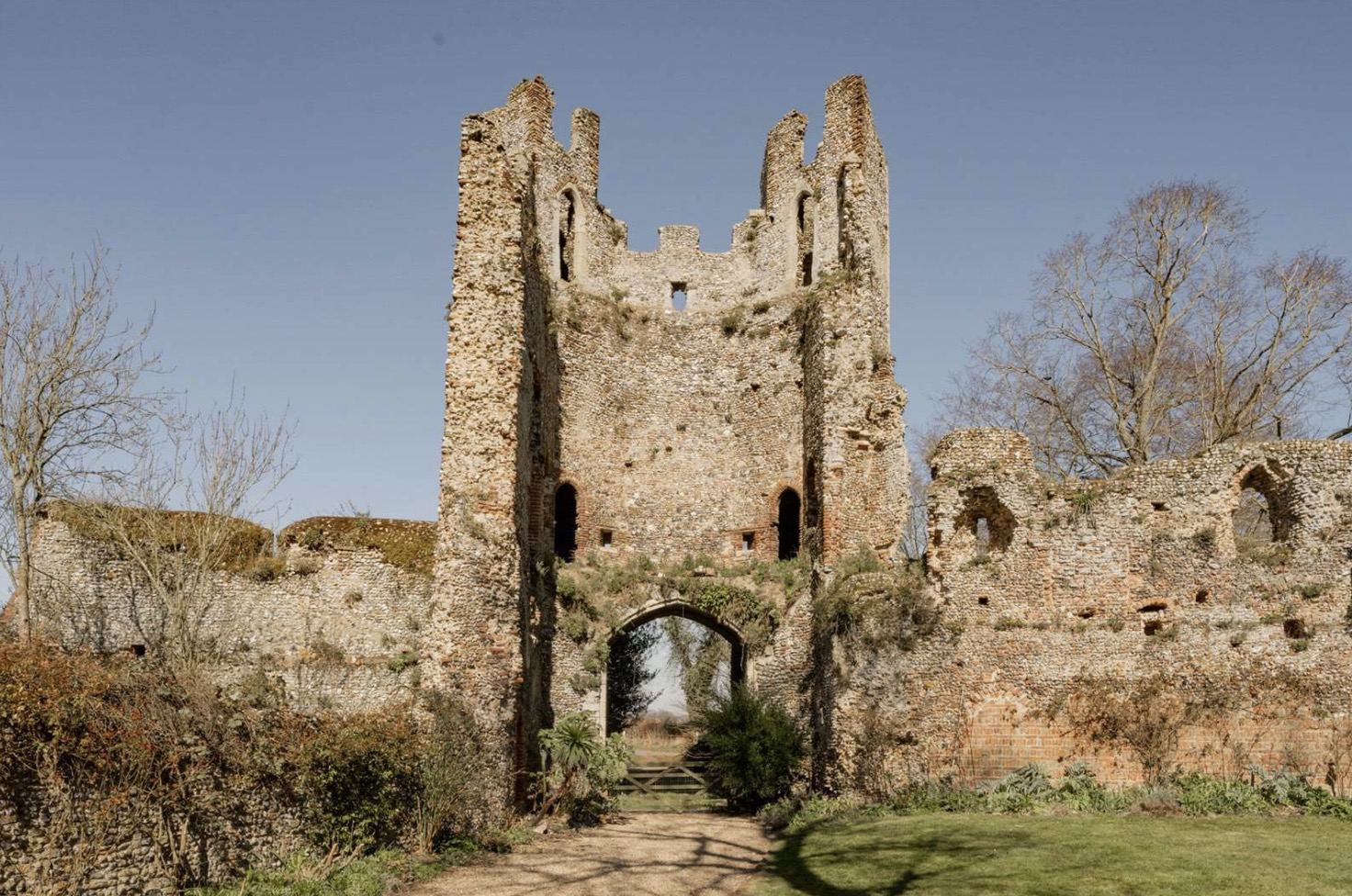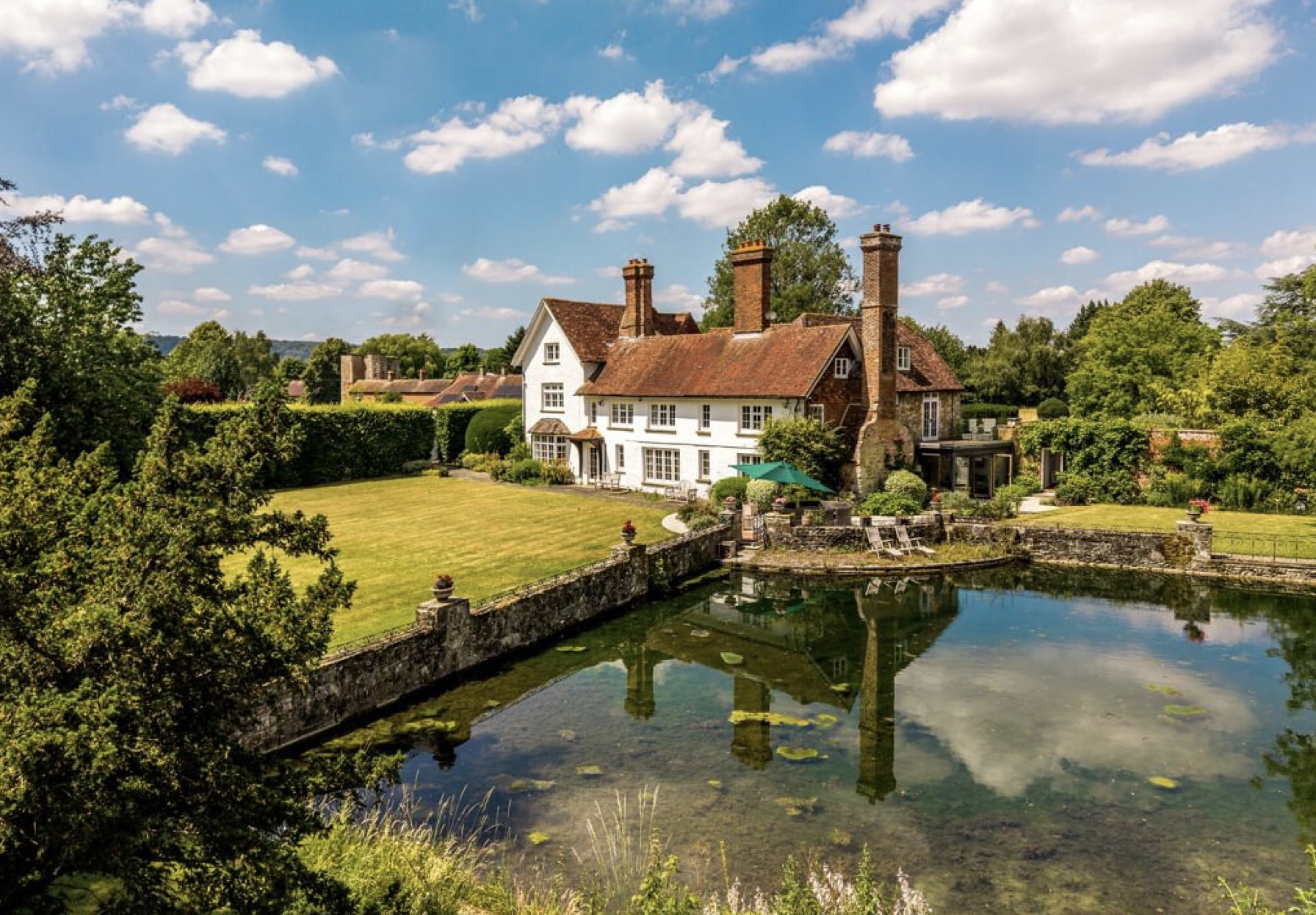So you want to buy a ruined castle? Here's what you need to know
Buying a property that includes a ruin — whether it be a castle, ancient priory or a crumbling Roman villa — carries undoubted romance, but there are caveats.


To the Georgian artist, the painterly appeal of ruined priories and their broken outlines lay in the effect on the senses, recording decay as picturesque scenes, as places of poetic intrigue. Derelict strongholds and stony contours of some long-lost cloister sketched out in watercolour hinted at bygone status, drawing out a romantic retort. All kinds of architectural fragments survive in the parks of country estates, many former monastic lands granted post-Dissolution to aristocratic families who built new houses nearby. Buying a property complete with an ancient wreck is, to many, an attractive prospect, but it comes with caveats for would-be purchasers.
‘The draw is that it is historically interesting and the house looks out over the ruins and the river,’ points out John Coleman, director at GSC Grays in Richmond, on the spectacular arrangement at the 1,103-acre Kirkham estate on the River Derwent in North Yorkshire.
It is currently for sale for £25 million with GSC Grays, complete with the early 19th century, pale gold-coloured mansion at its core and the craggy remnants of the Augustinian Kirkham Priory nearby, hollowed out by commissioners to Henry VIII. Yet, having the old shell of a building as part of an estate requires an understanding of statutory designations and associated obligations.

The ruins of Kirkham Priory, on the £25m Kirkham Estate.
Here, English Heritage manages the Priory, its maintenance, security and even dedicated parking for tourists. ‘A new owner could take comfort from the knowledge that they can enjoy the ruins without the responsibility to manage them,’ observes Mr Coleman. ‘There are those who would rather not have any public access, but that would inevitably mean taking back the management responsibilities.’
Elsewhere, the onus may fall directly on the owner. Henry Ryde, head of heritage and townscape at Savills, notes that many may be designated Scheduled Monuments. ‘It is against the law to disturb them without consent, cause deliberate damage, or use a metal detector or remove an object from the site without a licence,’ he says, adding that ‘works which directly affect a Scheduled Monument—for example, resulting in loss or damage, repair or alteration—in England will require consent from the Department for Culture, Media and Sport.’
Looking after old buildings and sites can be expensive, although Historic England does provide grants for repairs to those eligible and usually considered ‘at risk’. This includes for the curtain wall and keep of Mettingham Castle in Suffolk, a little-known site with an impressive provenance as a manor house fortified by Sir John de Norwich in 1342. The six-bedroom, converted timber-frame barn within the crumbled fortifications of this Scheduled Monument, for sale with Savills for £1.6m , provides the chance to buy into the past.

Mettingham Castle: 'The opportunity to own a piece of genuine history is nothing short of extraordinary.'
It is set on a plot of three acres and includes the ruins, which have in the past been repaired with the help of Historic England grants, and a Victorian glasshouse. ‘Mettingham Castle is one of the most remarkable properties I’ve had the pleasure of visiting,’ says Tom Clayton, associate director at Savills Norwich. ‘Its setting is unique and the opportunity to own a piece of genuine history is nothing short of extraordinary.’
Exquisite houses, the beauty of Nature, and how to get the most from your life, straight to your inbox.
Not all remains are above ground. At Castle House, Otford, near Sevenoaks, Kent, a Grade II-listed, extended farmhouse of the 15th/16th century now available for the first time in years, the property lies at the edge of a succession of ponds connected to Thomas Becket’s Well and within the Scheduled area corresponding with the remains of the Tudor Otford Palace set out in 1518 by Archbishop William Warham. Among its many selling points, not least pretty landscaped gardens, selling agent Knight Frank highlights an archaeological dig that uncovered a Roman villa in the paddocks.

Castle House in Otford, Kent.
The layers of history might run deep, but pockets sometimes run deeper. The reinstatement of an old building as a habitable dwelling could cost the earth if not done correctly.
New services and access might prove tricky. ‘We always advise going in with open eyes and the right team and that a conservation-led approach is essential, together with tradespeople who understand the materials and methods involved,’ recommends Alexander Macfarlane, head of residential building consultancy at Strutt & Parker. ‘Ruins tend to hide their secrets well: behind every stone or slab is the potential for something unexpected. Timescales, budgets and contingencies aren’t only helpful, they’re essential. When it works, however, the result is often a home like no other. A restoration should speak the same architectural language as the original. It shouldn’t overwrite the past, but work with it, continuing the story.’
Outstanding examples of renewal include Hellifield Peel in North Yorkshire, a defensive relic of the 14th century that was once open to the elements and famously revived as a superlative family home. Others, such as the RIBA Stirling Prize-winning Astley Castle in Warwickshire, brilliantly demonstrate the capacity for inventive change— here with modern accommodation in contemporary design blended with the ancient fabric of what was a burnt-out shell, a visually powerful connection between old and new. It is not before time.
Lucy Denton is a writer and architectural historian. She has worked for Adam Architecture, Sotheby’s and ArtUK, and has written for Hudson’s Historic Houses and The Times. She writes regularly for Country Life.

